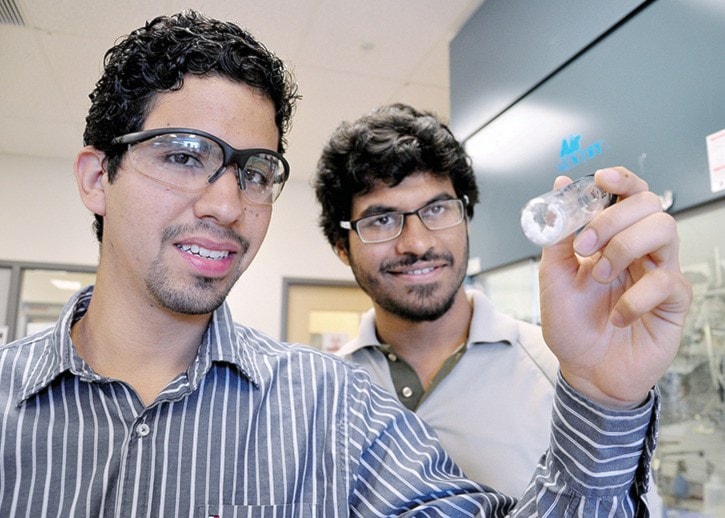For Jorge Peña and Anup Daté, a summer at the University of Victoria provided hands-on training in high-tech research, and a chance to explore a scenic new city. For Canada, it’s a 12-week opportunity to convince the brightest young minds from emerging economies to relocate here.
Peña, a 23-year-old biotechnology student from the Monterrey Institute of Technology in Mexico, tackled cutting-edge research in epigenetics, a field that holds promise in cancer diagnostics and treatment. Daté, 21, studies engineering at the Indian Institute of Technology, Bombay, and advanced techniques in capturing large amounts of waste heat to allow far more efficient heating of buildings.
They are two of 14 science and engineering interns from Brazil, China, India, Mexico, Turkey or Vietnam who attended UVic this summer, and of 280 in Canada, under the Mitacs-Globalink program.
“It’s a reverse brain-drain program,” quipped professor Fraser Hof in UVic’s department of chemistry, who oversaw Peña’s work. “It targets countries with high-quality people. Hopefully they come back as a graduate student.”
“It’s very competitive,” adds Rustom Bhiladvala, a professor of mechanical engineering overseeing Daté’s work. “People selected have the highest GPA to come here.”
When Peña wasn’t wandering around Beacon Hill Park or Fisherman’s Wharf, he was in a chemistry lab trying to understand how a useful molecule called a calixarene interacts with blood and other bodily fluids.
Calixarenes could ultimately become a way to control how particular genes operate, which could come in handy in shutting down cancerous cells.
“Epigenetics is like a light switch to control how a gene expresses, or not. If you have a mutation, you can turn it off or control what it is doing,” Peña says. “We are hoping to use these molecules as therapy, but we need to know how it interacts in body fluids.”
Hof noted that this avenue of research was only recently discovered “by accident,” like any great innovation. “It is completely brand new. We came up with it a month before Jorge joined us,” Hof said.
At UVic, Daté, who happily explored the Sooke Potholes and areas like Cadboro Bay, tackled the potentially far-reaching problem of how to efficiently capture and store heat produced in buildings by studying the various properties of “phase change materials” that can hold large amounts of heat in a liquid form.
“This is looking at ways to cut building heat loads,” Daté said. “We want to trap heat created by solar and waste heat (such as from air conditioning), and store it for later.”
“Our buildings are very poorly designed thermally,” Bhiladvala remarked. “We throw heat away when we don’t want it, and pay for it when we do want it. We’re at a stage of trying to alleviate that.”
Both students are returning to their home countries after July 15, but both are eager to return to UVic for post-graduate degrees.
“The weather is brilliant here and the people are awesome,” Daté said. “I think I’ll come back. If I’m accepted of course.”
“I’m hoping to come back for my PhD,” Peña said. “I really like Canada. The people are polite and helpful.”
editor@saanichnews.com
